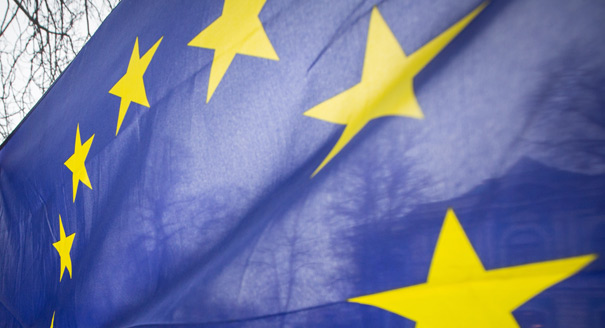Let’s not pretend: the European Union’s Eastern Partnership (EaP) clearly excludes Russia. Launched in 2008, the EaP was designed to strengthen Brussels’s relationships with Ukraine, Belarus, Azerbaijan, Moldova, Georgia, and Armenia and to push back against those who favor a “Russia first” policy when it comes to integration with Eastern Europe. Context matters though: creation of the EaP was heavily influenced by the EU`s reaction to Ukraine`s Orange Revolution in 2004. Given that 2004 was the year of EU`s big bang expansion, it took several years for Brussels to take proper notice of its new neighbors. But at last week’s Riga Summit, the EaP demonstrated that it has become the de facto dividing line between Russia and “not Russia”. Unfortunately thanks to its exaggerated rhetoric about EU integration and membership, the EU has created unrealistic expectations among partner states that have exacerbated divisions between east and west.
The disparity between rhetoric and reality is neither new nor surprising: the EU’s lack of political will and capacity to expand eastward, the post-Soviet states’ disappointing and protracted transitions to democracy and free markets, and a resurgent Russia have put pressure on European diplomats to make promises they cannot deliver. The most senior EU diplomat in Kyiv after Ukraine’s Orange Revolution in 2004 summed up the dilemma well: Ukraine knows that the EU cannot offer it membership but pretends otherwise; the EU knows but refuses to admit that Ukraine is not going to fulfill the criteria for membership.
This policy of pretending should have changed as a result of the Ukraine crisis. After all, it was the EuroMaidan Revolution, precipitated by Viktor Yanukovych’s refusal to sign an Association Agreement with the EU before the EaP summit in Vilnius in November 2013, that gave the partnership new life.But between Vilnius and Riga, the EU’s eastern policy began to reveal its impotence. The EU has little to show for the two institutions it created to support Ukraine in response to the Russian annexation of Crimea and invasion of the Donbas —i.e., the Ukraine Support Group and the EU Advisory Mission. The announcement of 1.8 billion euros in financial assistance to Ukraine, the most money Brussels has ever given to a non-EU country, is meager in comparison to the EU’s potential to help and its level of rhetorical solidarity. Still, Ukraine is also to blame for creating its own gap between rhetoric and reality: e.g., a visa liberalization agreement between the EU and Ukraine was not finalized because Kyiv failed to implement key technical elements.
The consequences of such a gap are also unfolding in Moldova. Once dubbed a “success story,” Moldova signed an Association Agreement and a visa liberalization regime with the EU, and is the largest recipient of EU assistance per capita. But these initiatives have not brought Moldova closer to EU accession, nor have they stimulated support for further integration among Moldovans. Rather, enthusiasm for the EU has plummeted as support for the Russian-sponsored Eurasian Union has grown. Moldovans are not displeased with the EU, but with their pro-EU government, which the Europeans have backed nearly unconditionally even though such support has done little to facilitate reform or economic growth.
Georgians are souring somewhat on the EU as well, even though Tbilisi was held up as the poster child of the EaP in Riga. Georgia has undergone a series of tremendous political and economic change through democratic elections and wide-ranging reforms, and signed an Association Agreement with the EU. But anxiety about Russia’s intentions with regard to the frozen conflicts in South Ossetia and Abkhazia, a worsening economy, partisan feuding, and an onslaught of Russian propaganda have made Georgians more ambivalent about further integration with the EU.
To the chagrin of many in the West, the words “illegal annexation of Crimea” were removed from the lengthy declaration that the Riga summit produced, at the request of Belarus and Armenia. These countries were not concerned with the three words, but with possible Kremlin retribution. Their reluctance epitomizes the gap between Western expectations and Eastern realities.
After Riga, the EU and EaP countries should focus on deliverables. The greatest question going forward is not what the EU can offer the EaP countries, but rather what kind of states the latter can become. Re-opening the membership debate would most likely lead to a new stage of geopolitical struggle between Moscow and Brussels rather than a new impetus for reform, which actually should be the priority at the moment.
The EU should continue to prioritize Ukraine and help Georgia and Moldova on their path to reform , but table the idea of membership for the time being. Indeed, the EU should think less about winning the EaP countries away from Russia, and more about instituting lasting economic and political reforms. The EU should not punish countries that choose closer association with the Eurasian Union. There is a precedent for this: Brussels did not punish Armenia for its U-turn away from the EU in the run-up to the Vilnius summit. Given Russia`s own difficulties at home, the risk that other countries might turn their attention eastward appears limited. The EU would be well-served to offer support for reform rather than more unrealizable promises.





